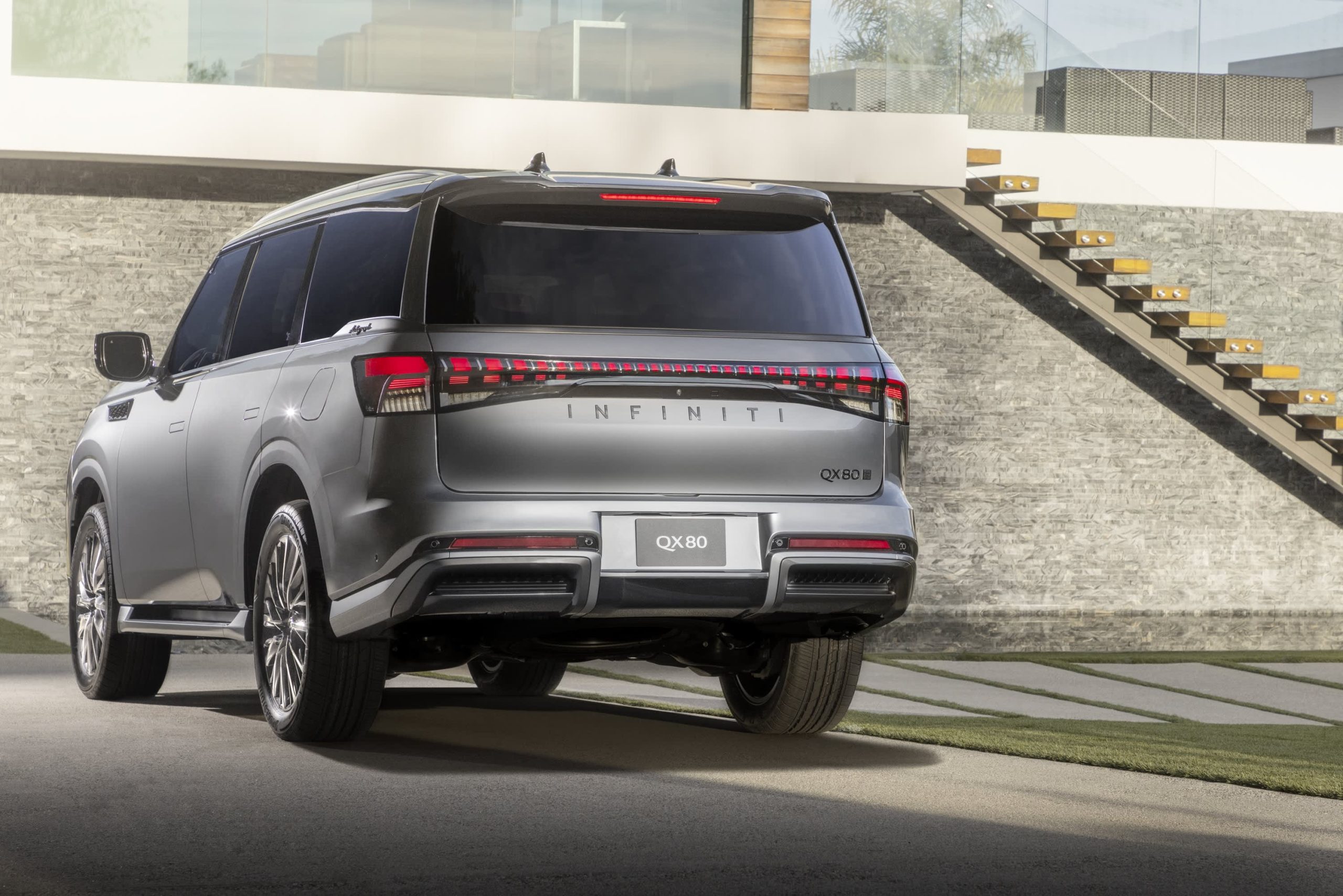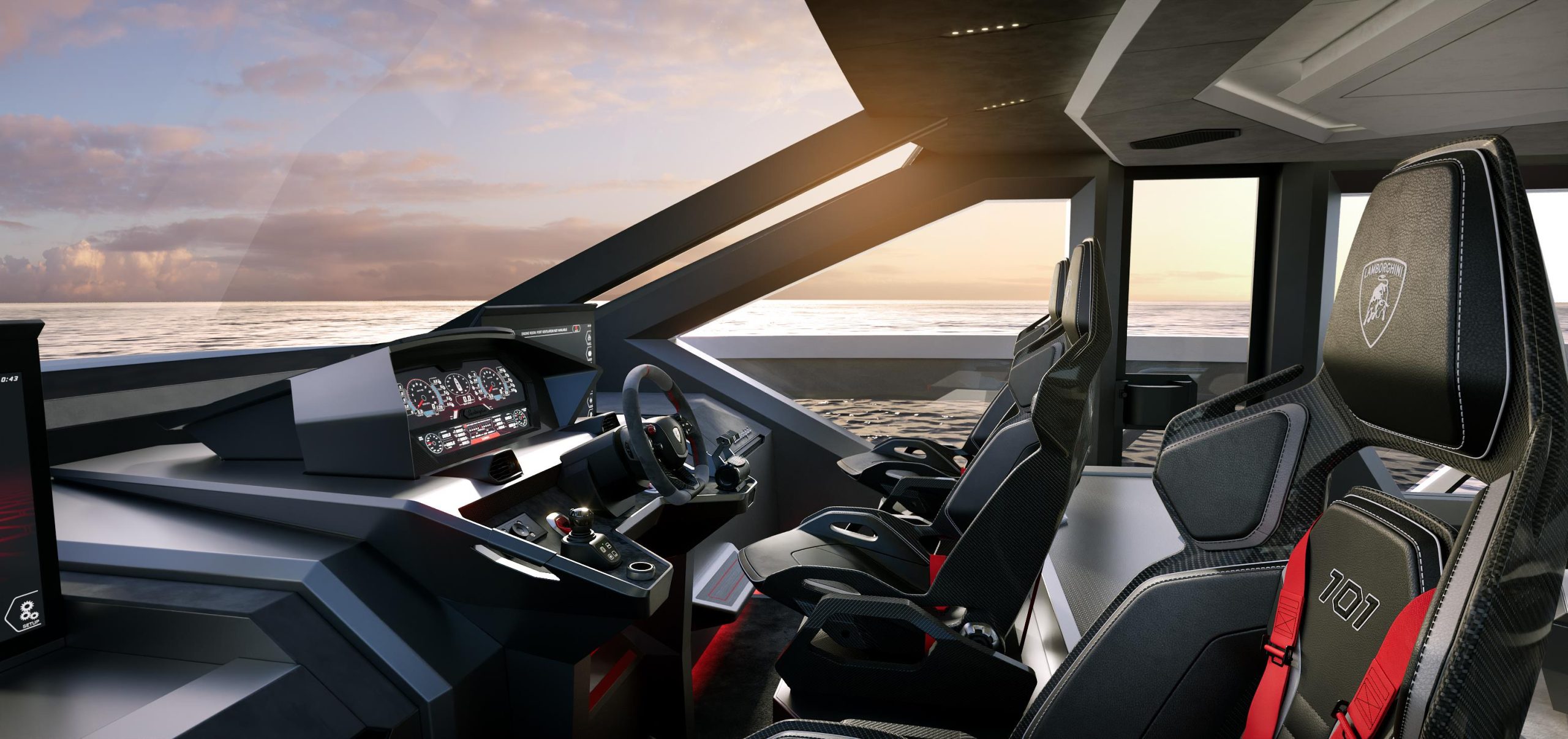The Three-Row 2025 Infiniti QX80 Makes a Sky-High Debut in New York
The 2025 Infiniti QX80, which will go on sale towards the end of summer, made a high-flying global debut in Manhattan last month.
The huge, three-row SUV was cut up into pieces then transported via elevator to the 100th floor observation deck of the Edge at Hudson Yards. The Infiniti, the first car to be so ensconced, was revealed 1,100 feet up amid flashing colour lights in partnership with iHeartMedia in a live stream as night descended on New York City. Later, five-time Grammy winner singer/pianist Jon Batiste entertained a group that included executives and dealers.
Luxury three-row SUVs have turned into an important segment, including electric entries such as the seven-passenger Kia EV9 and Cadillacs Escalade IQ and Vistiq (coming as a 2026 model). The QX80 isn’t electric; it’s powered by a 3.5-litre twin-turbo V6-rated engine with 450 horsepower and 516 pound-feet of torque. That’s up 50 horsepower and 103 pound-feet from the current QX80. The nine-speed automatic transmission is shifted with piano key buttons.
Prices start at US$82,450 for the Pure rear-wheel drive version, and soar to US$110,595 for the Autograph all-wheel drive (with four iterations in between). At the launch, Craig Keeys, group vice president of Infiniti Americas, described the QX80 as “our new flagship, pushing the envelope from ordinary to extraordinary.” Keeys didn’t mention the twin-turbo V6 power, and the other speakers skipped over it too—the QX80 is all about luxurious refinements and tech innovations.

Infiniti
For instance, heated and cooled seats for the first two rows are available, as is massaging in the second row. Upscale Autograph buyers get rear climate controls via touchscreen. Much mentioned at the launch was the segment-first availability of biometric cooling, which monitors second-row passengers body temperatures and automatically adjusts the climate controls and air flow to that section. So, if mom picks up an overheated soccer player, he or she will be cooled down while other passengers and the driver stay steady.
And then there’s the top of the line 1,200-watt, 44-speaker Klipsch premiere audio system with a 24-channel amplifier and, among other things, titanium tweeters and speakers in the roof. Other carmakers have big stereos, too, but this one has something called Individual Audio, which directs phone calls and navigation to the front headrest speakers without interrupting the cabin’s music. Or the driver can listen to sounds directed only at him or her, without waking up sleeping passengers.
The interior on the QX80 is decidedly upscale, with leather, wood, suede, and metal elements. There are two 14.3-inch displays. The driver’s screen has three separate views, and there is a nine-inch touchscreen below the infotainment display with climate functions and a haptic element to let users feel when their fingers are on the correct virtual button. A colour head-up display is available. When drivers approach their QX80, its flush door handles open up to welcome them.

Infiniti
At the top of the line is the Autograph grade, which gets a two-tone roof, dark chrome trim, and unique 22-inch Turbine wheels. Inside, it benefits from semi-aniline leather with hand stitching and open-pore ash wood trim with aluminium accents.
As it sat under the coloured lights on the vertigo-inducing observation deck, with a cold wind blowing, it was possible only to get a quick first impression of the QX80. It’s big, the type of SUV that only American automakers built until the Asian brands realised it’s a highly lucrative market. And recent experience suggests that buyers want their three-row SUVs with the top infotainment and luxury appointments. Hence the Autograph version might do quite well.
Batiste, with a drummer and alto sax player, played four songs, mixing up jazz, funk, New Orleans percussion interludes, and soul. He was kinetic, barely staying at the piano for half a song. One number combined John Coltrane and the Beatles before it turned to some jazz-rock. The children’s song “If You’re Happy and You Know It” became a bravura version of “When the Saints go Marching In.” In a brief interview, Batiste was asked about seeing the QX80 on that windswept platform. “It proves it’s durable,” Batiste says.
 Copyright 2020, Dow Jones & Company, Inc. All Rights Reserved Worldwide. LEARN MORE
Copyright 2020, Dow Jones & Company, Inc. All Rights Reserved Worldwide. LEARN MORE
A divide has opened in the tech job market between those with artificial-intelligence skills and everyone else.
A 30-metre masterpiece unveiled in Monaco brings Lamborghini’s supercar drama to the high seas, powered by 7,600 horsepower and unmistakable Italian design.
A 30-metre masterpiece unveiled in Monaco brings Lamborghini’s supercar drama to the high seas, powered by 7,600 horsepower and unmistakable Italian design.
When Lamborghini takes to the water, subtlety isn’t on the agenda. Unveiled at the Monaco Yacht Show, the Tecnomar for Lamborghini 101FT is a 30-metre superyacht that fuses Italian automotive theatre with cutting-edge naval engineering.
The model builds on the collaboration that began in 2020 with the Tecnomar for Lamborghini 63, a sell-out success that celebrated the marque’s founding year.
This new flagship pushes the partnership between Automobili Lamborghini and The Italian Sea Group to a grander scale, designed to deliver the same adrenaline rush at sea that drivers expect behind the wheel.
“The Tecnomar for Lamborghini 101FT redefines the concept of nautical luxury,” said Stephan Winkelmann, Chairman and CEO of Automobili Lamborghini.
“It is not only a yacht, but an affirmation of Italian excellence. The Italian Sea Group and Automobili Lamborghini share an exclusive clientele who are passionate about beauty, technology, and extreme performance.”
Design cues are unmistakably Lamborghini. The yacht’s sharp exterior lines echo the Fenomeno supercar revealed at Monterey Car Week, complete with Giallo Crius launch livery and signature Y-shaped lighting.
Inside, the cockpit and lounges mirror the DNA of Sant’Agata supercars through hexagonal motifs, sculptural seating and dramatic contrasts. With accommodation for up to nine guests and three crew cabins, indulgence meets practicality on every deck.
Performance is equally uncompromising. Three MTU 16V 2000 M96L engines and triple surface propellers generate a combined 7,600 horsepower, driving the yacht to 45 knots at full throttle, with a cruising speed of 35 knots. Two 35 kW generators provide additional efficiency and reliability, ensuring the yacht’s power matches its presence.
Mitja Borkert, Lamborghini’s Design Director, said: “With the Tecnomar for Lamborghini 101FT, we aimed to create a product that embodies the main design characteristics of our super sports cars. All the details, from the exterior to the colour, to the interior areas, recall and are inspired by Lamborghini’s DNA.”
Presented in scale at Monaco, the definitive Tecnomar for Lamborghini 101FT is scheduled to hit the water at the end of 2027. For those who demand their indulgence measured not only in metres but in knots, this is Lamborghini’s most extravagant expression yet.
Ophora Tallawong has launched its final release of quality apartments priced under $700,000.
BMW has unveiled the Neue Klasse in Munich, marking its biggest investment to date and a new era of electrification, digitalisation and sustainable design.





























